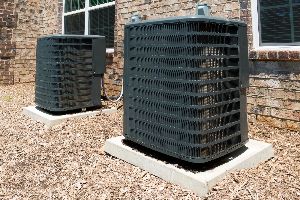How to Protect Your AC From the Effects of Haboobs

Massive dust storms known as haboobs occur during the late summer months in Arizona, and they can wreak havoc on your air conditioning system. While these large storms are unavoidable, there are steps you can take before and after a storm to minimize any damage to your AC. This guide details how haboobs may impact your system and what you can do about it.
How They Affect Your Air Conditioning
Dust will blow into your system even if your home is sealed against it, coating the outdoor condenser coil and clogging the indoor air filter. This dust can also cause excessive wear on moving parts, causing parts failure and friction that contributes to overheating.
Debris like branches can also blow into the outdoor unit, damaging metal components and becoming lodged in the fan. If the fan can't turn, the motor or the unit itself may overheat, and the fan could break. A clogged filter or inhibited fan will reduce your unit's efficiency and lead to an eventual breakdown.
How to Prevent Damage
Before the Storm
Haboobs move quickly and can be unpredictable, making it hard to anticipate and prepare for them. However, if you do have time to safely prepare before it gets to you, the first thing to do is turn the air conditioning unit off. This is inconvenient during summer, but it's the greatest measure of protection possible, as it will prevent dust from being pulled into it and through the moving parts.
The next thing is to cover the outdoor unit with a tarp, securing it with sturdy stakes or heavy sandbags. This cover should be removed immediately after the storm, as your unit needs airflow, but it will provide a barrier against dust and small debris.
After the Storm

Keep the AC turned off and remove the tarp, being careful not to dump the dust into your outdoor unit. If you were unable to cover it before the storm, examine the unit for visible damage, like dents, and remove any debris, if possible. With the power to the unit still off, use a hose to gently rinse down the exterior component, cleaning off the dust.
Before turning it back on, change your air filter. Any dust storm is enough to clog one, and running your AC with a clogged filter will inhibit airflow, cause overheating, and pull more dust into the unit. After all of this is done, turn on your unit, but if it runs poorly, you'll need a professional to test and inspect it. The evaporator and condenser coils may need a more thorough cleaning, or your condensation line may be clogged.
If your air conditioner needs inspecting after a storm, call on Frederick & Sons Air Conditioning & Plumbing in Gilbert, AZ. Serving the area for over 40 years, they are licensed, bonded, and insured. All repairs are backed by 2-year warranties. Browse their full services online, or call (480) 332-6589 for a quote.
About the Business
Have a question? Ask the experts!
Send your question

